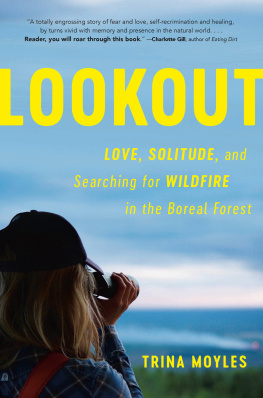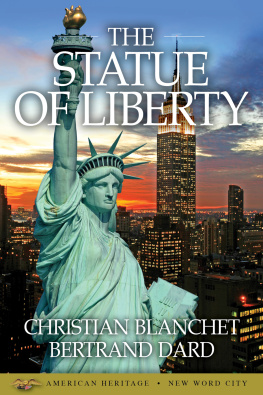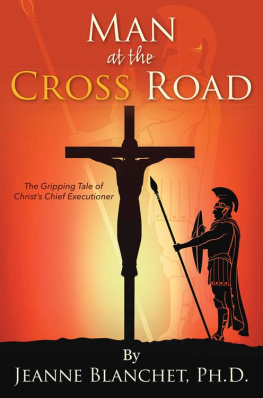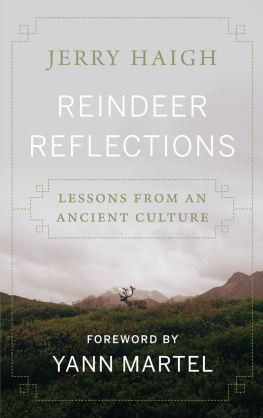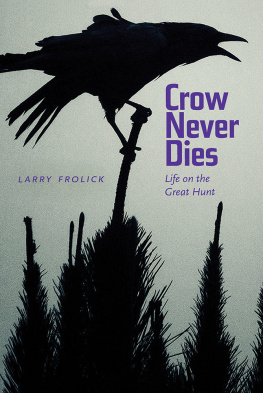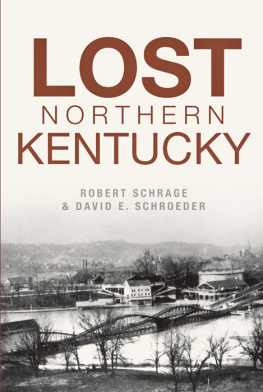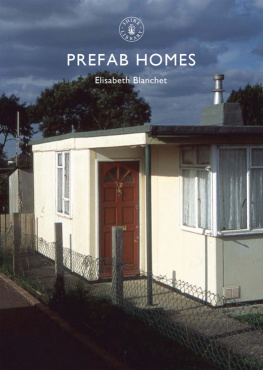The Northern Horizons of Guy Blanchet
Intrepid Surveyor, 18841966
The Northern Horizons of Guy Blanchet
Intrepid Surveyor, 18841966
Gwyneth Hoyle
NATURAL HERITAGE BOOKS
A MEMBER OF THE DUNDURN GROUP
TORONTO
Copyright Gwyneth Hoyle 2007
All rights reserved. No part of this publication may be reproduced, stored in a retrieval system, or transmitted in any form or by any means, electronic, mechanical, photocopying, recording, or otherwise (except for brief passages for purposes of review) without the prior permission of Dundurn Press. Permission to photocopy should be requested from Access Copyright.
Published by Natural Heritage Books
A Member of the Dundurn Group
3 Church Street, Suite 500
Toronto, Ontario, M5E 1M2, Canada
Gazelle Book Services Limited
White Cross Mills
High Town, Lancaster, England
LA1 4XS
Dundurn Press
2250 Military Road
Tonawanda, NY
U.S.A 14150
Edited by Jane Gibson
Designed by Erin Mallory
Printed and bound in Canada by Marquis
www.dundurn.com
Library and Archives Canada Cataloguing in Publication
Hoyle, Gwyneth
The northern horizons of Guy Blanchet : intrepid
surveyor, 1884-1966 / Gwyneth Hoyle.
Includes index.
ISBN 978-1-55002-759-4
1. Blanchet, Guy Houghton, 1884-1966. 2. Canada, Northern-
Biography. 3. Surveyors--Canada--Biography. I. Title.
TA533.B53H69 2007 526.9092 C2007-904654-1
1 2 3 4 5 11 10 09 08 07
Front cover: Guy Blanchet and cairn at the beginning of Coppermine River, 1924.
Courtesy of Janet Blanchet

We acknowledge the support of the Canada Council for the Arts and the Ontario Arts Council for our publishing program. We also acknowledge the financial support of the Government of Canada through the Book Publishing Industry Development Program and The Association for the Export of Canadian Books, and the Government of Ontario through the Ontario Book Publishers Tax Credit program and the Ontario Media Development Corporation.
Care has been taken to trace the ownership of copyright material used in this book. The author and the publisher welcome any information enabling them to rectify any references or credits in subsequent editions.
J. Kirk Howard, President
Table of Contents
Acknowledgements
I would like to acknowledge the use of material from the following sources:
Archives, Canadian Imperial Bank of Commerce
British Columbia Archives
Dartmouth College Library, Hanover, New Hampshire
Glenbow Institute, Calgary
National Archives of Canada
Trent University Archives
The Beaver
To James Raffan, writer and northern traveller, go my profound thanks for taking time away from his own writing to read my first draft and give me his carefully written, insightful comments, and the benefit of his wide experience.
Preface
Over a lifetime of reading accounts of northern travel, I found the name of Guy Blanchet becoming familiar to me from his articles in The Beaver and his book, Search in the North. On learning that his papers were held in the British Columbia Archives, I made a brief exploratory visit there several years ago. In one of his diaries, written in 1924, I was intrigued by the statement, It feels strange to think that this may be my last long trip in the North. In fact, his travels in the North continued for the rest of his working life about twenty more years. The North had laid its spell on him, and he continued to work and travel there in all seasons and conditions, using every available means of transportation from dog teams to airplanes.
A few years after my first visit to the archives, at the annual gathering of wilderness travellers in Toronto, one of the speakers was Janet Blanchet. She gave a presentation about her father, R.M. Patterson, the man whose book Dangerous River introduced the fabulous valley of the Nahanni to the reading public. While I had read and enjoyed all of Pattersons books, my question to her was, Do you have any connection to Guy Blanchet? and her reply, He was my husbands uncle, both surprised and delighted me. Throughout the writing of this biography, Janet has always been ready to answer my questions, and suggest other persons I might contact.
Among those contacts, is Cathleen Converse-Kess who is currently writing the biography of Muriel Wylie Blanchet (otherwise known as Capi), Janets mother-in-law, and she and I have been able to exchange much useful information about the Blanchet family. Janet also put me in touch with her nephew, Richard Guy Blanchet, the custodian of many of Guy Blanchets photographs, which he has generously loaned to illustrate this book.
During the short weeks spent at the archives in Victoria, I have appreciated the hospitality of Suzanne Hamilton and Dorothy Grieve, who also retrieved essential archival material that I had overlooked during my concentrated reading there. In Peterborough, Kathy Hooke, the niece of George Douglas, and Enid Mallory, author of Coppermine, gave me copies of correspondence between Douglas and Blanchet. Knowing of my interest in the subject, Prof. R.H. Cockburn, of Fredericton, sent me some discarded correspondence files from the Department of Energy, Mines and Resources, which provided insights into the workings of the Survey Office in Ottawa.
Professor Suzanne Bailey of the English Department at Trent University, who teaches a course in the Literature of Travel, has encouraged me by reading and discussing chapters as they were written, as has my husband, Alex. Bob Parr, retired partner in the surveying company of Elliott and Parr, explained some of the technicalities of the profession and commented on my descriptions of it. Michael Peake used his skill and knowledge of the North to scan the photographs from Blanchets albums. Thanks also to Douglas Hoyle who was always available to guide me through computer problems.
Introduction
The beginnings of cartography are lost in the mists of time. Early man drew maps on the walls of caves, in the sand or on dried animal skins to show where to find game, water in the desert, or even to tell those coming behind where the leaders of the tribe had gone. The ancient Babylonians, discovering that the sun and stars followed a regular path in the heavens, compiled a catalogue of their movements and produced the idea of dividing the suns path into the twelve signs of the zodiac, which gradually evolved into 360 degrees, with further sub-divisions into minutes and seconds. Egyptians under the Pharaohs, and later the Greeks, made use of this knowledge to create maps that bore some resemblance to the maps of today. Cartography had become a science, making surveying one of the oldest professions in the world.
Surveyors are known to have been part of the work force that built the pyramids of ancient Egypt, using their skill to mark the positions of the sites and directing the labourers and slaves to move the huge stone blocks to the correct locations. The pharaohs employed them to lay out plots of land along the Nile and those early surveyors made their measurements using knotted rope, stretched and soaked in beeswax to maintain its integrity. On Egyptian hieroglyphics there are representations of men using instruments to take sightings of the sun or stars to locate a geographical position.
The work of modern surveyors is all around us. Highways, city streets, railways and airport runways could not have been built without them. Maps, boundaries, mining claims, property title deeds, even skyscrapers, require their skill and variety of techniques. Aeroplanes, cameras, computers, satellites and electronic measuring devices have changed the way they work, and only increase our admiration for the perseverance, stamina and accuracy of those who mapped and measured this country using Gunters chain or metal tape, transits, rods and wooden pickets before such sophisticated equipment had been invented.
Next page

